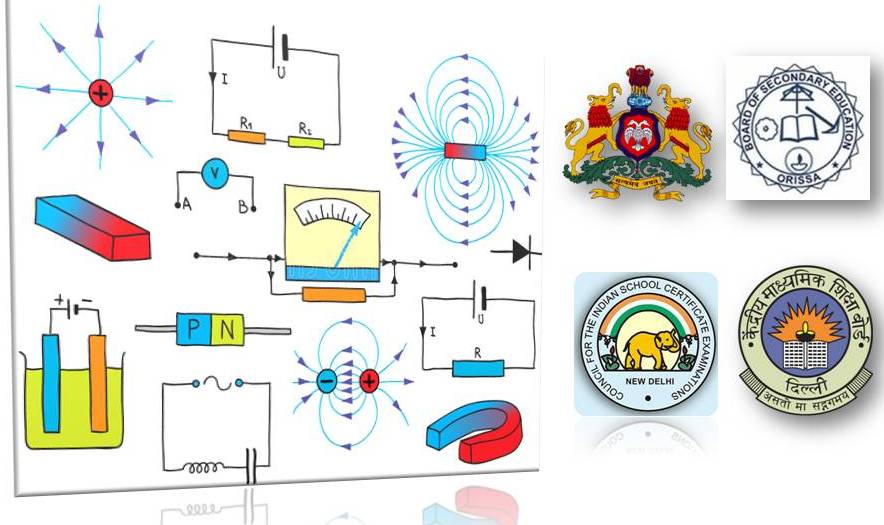Physics preparatory tests for PUC, ISc, class XII in the CBSE, ICSE (CISCE), State boards.
Subject: Physics
Test: Preparatory test — I.
Class: ISC — II (also good for PUC — II)
date: 24 the June 2013.
Time: 1.5 hours.
Total marks: 50
Section A
Objective — 3 questions carry 1 mark each, all to be answered.
Question 1
What’s the work done to take a charge Q on a circular voyage, on an equipotential surface?
A. Zero B. Depends on radius of circle
C. Depends on distance from center of equipotential surface D.
Question 2
Rutherford’s atomic model is based on which fact
A. Geiger Marsden scattering of suggests presence of nucleus.
B. Smith’s electrodes dipped in electrochemical material
C. Quantization of charge D. Quantization of angular momentum
Question 3
Half life and decay constant
are related as follows
A. B.
C. is a constant and does not depend on
D.
Section B
Subjective — 5 questions carry 1 mark each, all to be answered.
Question 4
Write the SI unit of electrostatic potential.
Question 5
If half life , of radon is
and you have
Radon nuclei after what time you will be having
of them due to radioactive decay?
Question 6
What’s the typical energy output range of Indian nuclear reactors?
Question 7
Which of the following physical quantity is scalar: electric field intensity, electric potential, dipole moment?
Question 8
Between a dipole and a point charge whose potential drops faster?
Long Answer Type — 6 out of 9 questions carry 7 marks each, answer only any two from each of the following sections, C, D or E. Draw necessary diagrams with suitable quantities and units shown across the diagram.
Section C
Question 9
Use superposition principle of electric field intensity of two charges, to obtain the electric field intensity E of a dipole along the dipole axis. This is known as electric field for the End-on configuration.
Also use the same idea to obtain the potential at a point vertical to the dipole axis. This is known as potential for the Broad-on configuration.
Question 10
Obtain the electric field intensity E of a dipole vertical to the dipole axis, i.e. — Broad-on electric field. Also obtain the potential at a point on the dipole axis, i.e. — End-on potential.
Question 11
State the Coulomb’s law of interaction for two charges in vector form. Define permittivity of free space, relative permittivity of a medium and permittivity of the medium and write the relation between them.
Define Electric flux and state Gauss law. Write 3 properties of electric lines of force. Write two properties of Gaussian surface. Write one property of equipotential surface.
Section D
Question 12
Describe the principle of a nuclear reactor with a suitable diagram and write the functions of its important components. Write two aspects of Nuclear Hazard.
Question 13
State Postulates of Bohr’s atomic model. Use the angular momentum quantization in stationary orbit to obtain the quantized radius , speed
and energy
electron in orbits of H-atom.
Question 14
Starting out with the law of radioactive decay derive the expression for number of nuclei at any time as a function of initial number of nuclei and decay constant. Derive the relation between half life and decay constant
from this.
Section E
Question 15
Describe the Rutherford atomic model by explaining results of Geiger Marsden scattering experiment. Draw a PE, KE, E diagram of a Rutherford H-atom. Draw the Marsden scattering experiment plot and Gold-foil deflection diagram and explain each with 1 or 2 sentences. What are the drawbacks of this model? (2 is enough)
Question 16
Use the Bohr’s level energy
to find the energy of absorption from
state and energy of emission from
state.
Question 17
Describe the Van-de-Graaff generator, its principle, working and use.

Leave a comment